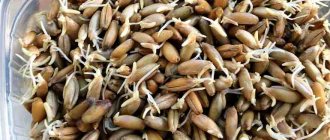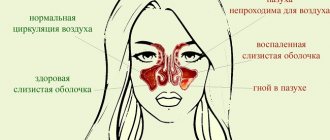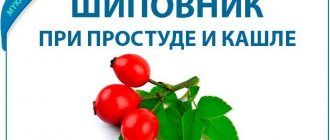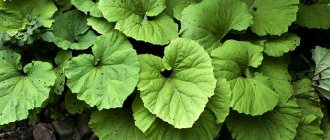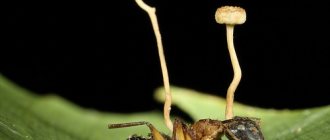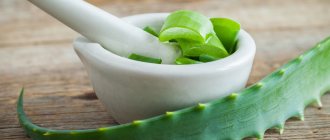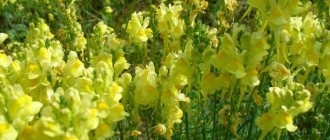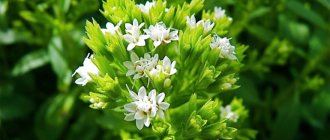general characteristics
Oats belong to the annual herbaceous plants of the cereal family. On an industrial scale it is used as a food and fodder plant.
The culture produces oblong inflorescences, which consist of several drooping spikelets. No more than 3 flowers develop in the spikelets, which are compressed on the sides and “chained” in large scales. The fruit of oats is called a caryopsis.
A total of 22 types of oats have been bred. The predominant territorial distribution is America, the countries of the Old World. The most important variety of oats is seed oats. Acceptable names are seed or forage oats. Only this variety is eaten, the rest are considered harmful weeds that are eradicated by farmers.
Biological and morphological features
Oats consist of a root, stem, leaves and panicle . The stem is straight, thin, straw-like. Long leaves with pointed ends are located alternately along the stem.
What kind of inflorescence does common and common oats have?
In both cultures it is called a panicle. Consists of large hanging spikelets with 2-3 flowers .
The lower flower scales are incised at the apex, bi-awned or two-toothed, with a strong awn on the back, less often without an awn. At the apex there is a hairy ovary. The fruit of oats is a grain, pubescent over the entire surface. The root system is fibrous, well developed and can penetrate the soil to a depth of 120 cm . It has the ability to well absorb poorly soluble elements from the soil. About 80-90% of oat rhizomes are located in the arable layer. The surface of the system is increased due to the large number of root hairs.
The culture is undemanding to heat. Already +1...+2°C is enough for the seeds to begin to germinate . The period from sowing to germination depends on temperature and is 20 days at +5°C and a week at +15°C. It is good if during the period of germination and the beginning of booting the air temperature is +12...+16°C, and during the period of flowering and grain filling - no more than +22°C.
Attention! Young seedlings can withstand frosts down to -8°C, but during the flowering period a temperature of -2°C can already destroy the plant.
Due to the fact that the root system develops quickly and powerfully absorbs moisture from the soil, oats are more resistant to spring drought than barley and spring wheat. On the contrary, it tolerates summer droughts worse. Temperatures of +38…+40°C are already destructive for him.
Oats are not picky about soil, but soddy-podzolic sandy loam and light loam are still preferable for its cultivation . This is due to the fact that for normal development the root system requires a large amount of oxygen. The oat root system has a high absorptive capacity due to the large number of highly active root hairs. They occupy 90% of the entire surface of the root system.
For good growth and full development, oats require potassium, phosphorus and nitrogen . The need for phosphorus is greatest in the early stages of development and growth. Potassium is needed at all stages.
Oats are a long-day plant . At the initial stage, a little light is enough for him. During the flowering phase, the duration of daylight should be at least 13 hours a day. Failure to comply with this rule will result in the oats continuing to grow, but the flowering period will not occur. In the future, for normal development, it is important that daylight hours range from 14 to 16 hours. After fruiting is completed, further growth does not depend on the length of daylight hours.
Features of eating oats
Whole grain oatmeal is a traditional breakfast for several million people from different parts of the world. But what is the basis for this choice and is it right to place carbohydrate cereals at the very beginning of the day?
Why you should eat oatmeal for breakfast
Our well-being and mood for work during the day depend on the first meal. That is why nutritionists categorically prohibit skipping breakfast or replacing it with a cup of tea and a sandwich with doctor’s sausage on top.
Oats will be a real salvation for those who cannot imagine their day without sugar in any form (cakes, bars, juices). It dulls cravings for sweets and promotes long-term satiety so that the body does not have time to crave a harmful snack.
Whole oat grains have a low glycemic index.
Reference. Glycemic index (GI) is the degree of influence of foods on blood glucose levels.
Oats will simply prevent your sugar levels from rising too high, but will dull the feeling of hunger for several hours. What if your sugar levels are too high? Glucose chains us to the bed, gives us a minimal amount of energy and supplies us with an indomitable desire for any, even not the most delicious chocolate. Because sweets are the easiest way to quickly saturate your body with carbohydrates. We receive a rapid charge of energy, which also drops rapidly. 30 minutes of activity are replaced by even greater fatigue, exhaustion, and so on in a circle. This trick won't work with a healthy oat breakfast.
Only whole oat grains have a low GI. Instant oatmeal packages contain the same quick carbohydrates as a palm oil candy bar. Such a meal will cause a sharp jump in blood glucose and again turn into hunger. Buy only whole oat flakes or unrefined oats, the cooking time (not steaming) of which starts at 20 minutes.
In 1999, scientists at Boston Children's Hospital decided to conduct an experiment. They replaced instant oats with whole grain (regular) oats. During the day, the children began to snack 35% less than before the experiment. Participants noted that they felt full in the first half of the day, and the craving for sweets completely disappeared.
Can morning oatmeal be harmful?
Whole grain cereals have a fairly high starch content. Nutritionists recommend limiting the amount of starchy vegetables in the diet (but not eliminating them completely). The optimal daily portion of oats for men is 150 grams, for women – 100 grams. If your daily caloric intake reaches 1800-2000 kcal (for example, if you are a marathon runner with increased intense activity), then the amount of oats can be increased.
Why is starch dangerous for couch potatoes and office workers who don’t go to the gym? Starch is additional sugar that causes a spike in insulin. In addition to weight gain, this product can cause inflammation in the body.
We must not forget that ancient grains contain many more calories than cultivated grains. Carefully calculate the nutritional value of the product and correctly enter oats into the daily requirement of BZHU.
Oats - medicinal properties
Oats are used as a diuretic, diaphoretic, antidiabetic and antipyretic. With its help, many diseases are treated: rheumatism, gout, sciatica, stomach ulcers, skin diseases.
Oats contain an enzyme that promotes the absorption of carbohydrates. This helps the gastrointestinal tract function. Magnesium contained in cereal helps the functioning of the heart muscle. Magnesium has a positive effect on metabolism and the nervous system. Oats are used for depression and other nervous disorders. In addition, oats improve immunity, so in the initial stages of hypertension it is indispensable. A healthy musculoskeletal system and clean, strong blood vessels are the result of replenishing the balance of silicon in the body, which is achieved with the help of oats. And phosphorus and potassium, which this cereal is also rich in, will help heal kidney and heart diseases. Oat oil is used for urolithiasis.
Chemical composition
Nutritional Information (based on 100 grams of whole, unprocessed grains)
| Calorie content | 316 kcal |
| Squirrels | 10 g |
| Fats | 6.2 g |
| Carbohydrates | 55.1 g |
| Alimentary fiber | 12 g |
| Water | 13.5 g |
Vitamin composition (in milligrams per 100 grams of whole, unprocessed grains)
| Retinol (A) | 0,003 |
| Beta-carotene (A) | 0,002 |
| Thiamine (B1) | 0,47 |
| Riboflavin (B2) | 0,12 |
| Choline (B4) | 110 |
| Pantothenic acid (B5) | 1 |
| Pyridoxine (B6) | 0,26 |
| Folic acid (B9) | 0,027 |
| Tocopherol (E) | 1,4 |
| Biotin (N) | 0,015 |
| Nicotinic acid (PP) | 4 |
Nutrient balance (in milligrams per 100 grams of whole, unprocessed grains)
| Macronutrients | |
| Potassium (K) | 421 |
| Calcium (Ca) | 117 |
| Silicon (Si) | 1000 |
| Magnesium (Mg) | 135 |
| Sodium (Na) | 37 |
| Sulfur (S) | 96 |
| Phosphorus (Ph) | 361 |
| Chlorine (Cl) | 119 |
| Microelements | |
| Aluminum (Al) | 1970 |
| Bor (V) | 274 |
| Vanadium (V) | 200 |
| Iron (Fe) | 5500 |
| Iodine (I) | 7,5 |
| Cobalt (Co) | 8 |
| Manganese (Mn) | 5250 |
| Copper (Cu) | 600 |
| Molybdenum (Mo) | 39 |
| Nickel (Ni) | 80,3 |
| Tin (Sn) | 32,6 |
| Selenium (Se) | 23,8 |
| Strontium (Sr) | 121 |
| Titanium (Ti) | 172 |
| Fluorine (F) | 117 |
| Chromium (Cr) | 12,8 |
| Zinc (Zn) | 3610 |
| Zirconium (Zr) | 61,4 |
Chemical composition and beneficial properties
Nutritional value of 100 g of fruit:
- proteins - 12.3 g;
- fats - 6.1 g;
- carbohydrates - 59.5 g;
- dietary fiber - 8 g;
- water - 12 g.
The calorie content of the cereal is 316 kcal.
The composition includes the following elements:
|
|
- Thanks to the extensive list of useful elements found in the culture, its consumption as food has a beneficial effect on the body:
- blood composition improves;
- blood vessels become healthier, heart function improves;
- water-salt balance is normalized;
- the state of the nervous system improves;
- bones and connective tissues are strengthened;
- metabolism improves;
- general condition improves;
- thyroid function returns to normal;
- harmful cholesterol is removed;
- organs and blood vessels are cleansed of toxins and waste;
- Gastrointestinal problems associated with poor digestion, ulcers, and gastritis are eliminated.
- There are a number of contraindications in which you need to minimize the use of the product (only as prescribed by a doctor) or completely abandon it:
- culture allergy;
- heart, kidney failure;
- gallstone disease, inflammation of the gallbladder;
- weakening of the body's protective function;
- increased stomach acidity.
Useful properties of the ingredient
- Control of vital processes inside the body. Oat protein triggers tissue regeneration and provides the body with energy through carbohydrates and fat. The product “restarts” metabolic processes, fills cell membranes with useful nutrients so that a person can think, move and feel good.
- A large amount of oats contains a special prebiotic - soluble fiber. It normalizes the intestinal microflora, helps it recover from illness, taking antibiotics, and abnormal food consumption. Soluble fiber compensates for the lack of nutrients in out-of-season vegetables and fruits and maintains the integrity of the intestinal mucosa.
The introduction of an additional 14 grams of fiber leads to a decrease in daily caloric intake and, accordingly, the numbers on the scale.
- Oats keep insulin levels low. What does this give? The body burns fat more easily and converts it into energy, rather than annual deposits on the sides. As a result, the fat layer is reduced, weight is reduced precisely due to fat, and not muscles or water, and cholesterol is eliminated. Low insulin levels serve as a specific prevention of diabetes mellitus and cardiovascular pathologies.
- Increase in overall efficiency ratio. The brain begins to work better, a large amount of produced energy enters the body, which can easily turn into high-quality strength or cardio training.
Use of the ingredient in cooking
Oats are one of the most revered cereals in cooking. It is used to make oatmeal, cereal, everyone’s favorite “Hercules”, flour, drinks, cereal bars and many healthy sweets. One product exists in the culinary world in many roles, which makes both cooks and consumers incredibly happy.
Nutritionists recommend selecting the degree of grain processing depending on the age category. It will be difficult for a child's body to digest and absorb unprocessed oats. Cereals can cause bloating, indigestion, problems with stool and other digestive disorders in the baby. Prepare oatmeal or cereal and never overfeed your child - his body itself will give a command to the brain as soon as it feels full. Adults may not limit themselves and eat any grain based on their personal taste preferences.
Recipe for milk from oats and oat flakes
Nutritional value (based on 1 serving of prepared milk)
| Calorie content | 237 kcal |
| Squirrels | 8.6 g |
| Fats | 4.6 g |
| Carbohydrates | 47.6 g |
We will need:
- oats – 250 g;
- oatmeal – 250 g;
- water – 1 l;
- sweetener/flavoring to taste.
Preparation
Prepare 2 containers of the same volume. Soak oats in one overnight, and oatmeal in the other. Place the grains filled with liquid into a blender and grind until they form a liquid porridge. Strain the mixture through cheesecloth or a fine sieve to remove excess husks and particles that the blender could not capture. This will make the drink softer and more delicate like traditional milk. Pour the mixture into a suitable container.
Try the finished drink. To enhance the taste, you can add honey, vanilla or any other sweetener/flavoring agent to your taste. Store milk in the refrigerator for no more than 3-4 days.
Table
| element name | quantity | daily norm | |
| The nutritional value | |||
| Calorie content | 316 mg | ||
| Squirrels | 10 g | ||
| Carbohydrates | 55.1 g | ||
| Fats | 6.2 g | ||
| Vitamins | |||
| Vitamin B3 | 1.5 mg | 15.059 mg | |
| Vitamin B2 | 0.12 mg | 1.329 mg | |
| Vitamin PP (NE) | 4 mg | 15.059 mg | |
| Vitamin B1 | 0.47 mg | 1.159 mg | |
| Vitamin E (TE) | 1.4 mg | 10.882 mg | |
| Vitamin C | 0 | 69.118 mg | |
| Provitamin A | 0.02 mg | 5 mg | |
| Vitamin A (VE) | 3 mcg | 752.9 mcg | |
| Vitamin B5 | 1 mg | 3.794 mg | |
| Vitamin B6 | 0.26 mg | 1.512 mg | |
| Vitamin B9 | 0.027 mg | 0.286 mg | |
| Vitamin H | 0.015 mg | 0.034 mg | |
| Vitamin A | 0 | 0.753 mg | |
| Vitamin E | 0 | 15 mg | |
| Vitamin B12 | 0 | 3 mcg | |
| Vitamin B4 | 110 mg | 500 mg | |
| Vitamin D | 0 | 0.011 mg | |
| Vitamin K | 0 | 0.085 mg | |
| Macronutrients | |||
| Calcium | 117 mg | 987.5 mg | |
| Magnesium | 135 mg | 276.177 mg | |
| Sodium | 37 mg | 948.824 mg | |
| Potassium | 421 mg | 1807.143 mg | |
| Phosphorus | 361 mg | 852.941 mg | |
| Sulfur | 96 mg | 1000 mg | |
| Silicon | 1 g | 0.03 g | |
| Microelements | |||
| Iron | 5.5 mg | 13.75 mg | |
| Chlorine | 119 mg | 2300 mg | |
| Copper | 0.6 mg | 0.806 mg | |
| Manganese | 5.25 mg | 2 mg | |
| Fluorine | 0.117 mg | 3 mg | |
| Bor | 0.274 mg | 1.4 mg | |
| Aluminum | 1.97 mg | 40 mg | |
| Titanium | 0.172 mg | 0.85 mg | |
| Strontium | 0.121 mg | 1.5 mg | |
| Iodine | 7.5 mcg | 131.2 mcg | |
| Zinc | 3.61 mg | 9.706 mg | |
| Chromium | 0.013 mg | 0.034 mg | |
| Molybdenum | 0.039 mg | 0.07 mg | |
| Vanadium | 0.2 mg | 0.01 mg | |
| Cobalt | 8 mcg | 100 mcg | |
| Nickel | 0.08 mg | 0.1 mg | |
| Rubidium | 0 | 0.2 mg | |
| Lithium | 0 | 0.2 mg | |
| Selenium | 0.024 mg | 0.04 mg | |
| Tin | 0.033 mg | 0.7 mg | |
| Zirconium | 0.061 mg | 0.5 mg | |
| Other elements | |||
| Alimentary fiber | 12 g | ||
| Organic acids | 0 | ||
| Water | 13.5 g | ||
| Mono- and disaccharides | 1.1 g | ||
| Ash | 3.2 g | ||
| Alcohol | 0 | ||
| Starch | 53.7 g | ||
| Saturated fatty acids | 1 g | ||
| Cholesterol | 0 | ||
| Unsaturated fatty acids | 4.52 g | ||
This table shows the average norms of elements for an adult.
Use in cosmetology
Modern pharmacy and luxury brands use oats for the basic line of cosmetics for the care of the face, body, hair and even the nail plate. The product “saves” the skin from age-related changes, has an antibacterial effect, gives the dermis tone and a shiny, healthy appearance.
In cosmetology, oat oil and specially separated enzymes are used. At home, you can prepare a quick mask/tonic water/scrub in one container. Wash the oats thoroughly and boil them until tender. Divide the resulting porridge into three parts.
- Prepare a mask. Press the resulting boiled porridge with a fork until it reaches a thick consistency. Apply the resulting mixture to your face, hold for 10-15 minutes and rinse with warm water. Such a mask does not need enrichment at all. After just a few procedures, the skin will become velvety and soft, fine wrinkles and rashes will disappear.
- Prepare tonic water. Take boiled oats and strain through a sieve or cheesecloth. Place the water obtained during the treatment in a convenient bottle and wipe your face daily after waking up and before going to bed.
- Prepare the scrub. Choose a scrubbing particle suitable for your skin type - coffee, sugar, salt, honey, sea salt and mix with boiled oats. Use the scrub 1-2 times a week. Apply to clean, steamed skin with gentle massaging movements. There is no need to put pressure on the skin and rub the scrub into all layers of the dermis at once. Walk lightly along the massage lines so as not to damage the skin. If there are rashes, pimples or severe acne on your face, do not use the scrub. It can aggravate inflammation, destroy existing rashes and provoke infection.
Pharmacological properties
Oat grains contain: starch, proteins, fats, B vitamins, choline, fiber, alkaloids, inorganic substances such as zinc, iron, manganese, organic acids. Oat grass contains a high percentage of flavonoids, saponins, and mineral compounds.
Oats have the ability to strengthen and tone the human nervous system, improve intestinal motility, cleanse the body of toxins, have a laxative effect, and normalize fat metabolism. Oats also have a soothing, softening and antioxidant effect.
This plant is often prescribed by doctors for use by patients with asthenia, chronic fatigue, and poor appetite.
Mucous decoctions of oats are recommended for diseases associated with malnutrition, viral hepatitis, enterocolitis, stomach ulcers, and gastritis. For diseases of the human nervous system, oats must be included in the diet. It is also included in diets for cardiac disorders, chronic dermatitis, and childhood diathesis.
The entire above-ground part of the plant is considered an ideal medicine that tones the body during physical and nervous exhaustion. Typically, products with oats are prescribed for the treatment of diseases associated with a lack of estrogen in the body, thyroid dysfunction, lingering colds and multiple sclerosis.
Oats are also widely used in cosmetology, in the form of masks based on oatmeal, used to tighten aging facial skin.
Dry and flaky skin is treated with oatmeal decoctions and lotions.
Oatmeal decoctions are also added to baths for sciatica, frostbite of the extremities, cold feet, and rheumatism.
Oatmeal decoctions have a diuretic and anti-inflammatory effect. Therefore, they are prescribed for edema, dropsy of the abdomen of a renal nature, kidney inflammation, inflammation of the bladder, and childhood urinary incontinence. Since oats are both an excellent antipyretic and diaphoretic, they are taken for colds.
How to choose oatmeal
There are a lot of oat products on the market, but the most popular of them is oatmeal. How to choose a truly healthy porridge and not get lost in the assortment of chain brands?
Rule 1: Never buy oatmeal breakfast cereals
Small, attractive packages contain a huge amount of sugar (not even a sweetener, but harmful white sugar), and chemicals. A ready-made dry breakfast will not give you satiety, vigor and energy. On the contrary, 20-30 minutes after eating, it will take away this energy. A “rich” composition can result in a specific reaction of the body: rashes, stool problems, problems with the digestive system.
Rule 2: Choose whole grains
Best materials of the month
- Coronaviruses: SARS-CoV-2 (COVID-19)
- Antibiotics for the prevention and treatment of COVID-19: how effective are they?
- The most common "office" diseases
- Does vodka kill coronavirus?
- How to stay alive on our roads?
The specifics of processing are always indicated on the packaging. Train yourself to study the ingredients before purchasing so you can spend your money on really high-quality and healthy food. Several degrees of processing are not responsible for quality. On the contrary, with each new cleansing, grain loses a colossal amount of nutrients. There is no point in feeding yourself useless trash, so be careful.
Rule 3: the simpler the composition, the better the product
Choose foods that are as simple as possible without flavorings, chocolate or fillers. Buy “empty” oatmeal, separately dark chocolate, dried fruits, nuts, honey, maple syrup and just mix the ingredients yourself. This will save your budget, will not affect the cooking time at all, and will bring tangible benefits to the body.
Rule 4: pay attention to the packaging
Oatmeal should be sold in airtight packaging or containers. This protects the fat from oxidation and the creation of specific bitterness.
If you don’t want to struggle with choosing oatmeal, then prepare the cereal yourself. Purchase whole oats and grind to desired consistency. Such a product will be as healthy and organic as possible.
Micro- and macroelements in oats, food grains
Oats, food grains contain the following elements: Mono- and disaccharides, SFA - Saturated fatty acids, Ash, Starch, Water, Dietary fiber, Unsaturated fatty acids, Sodium, Potassium, Phosphorus, Magnesium, Calcium, Sulfur, Copper, Boron, Silicon, Aluminum, Titanium, Strontium, Iodine, Manganese, Chromium, Fluorine, Molybdenum, Vanadium, Cobalt, Nickel, Selenium, Tin, Zirconium, Zinc, Iron, Chlorine.
| Micro and macro element | Meaning |
| Mono- and disaccharides, g. | 1,1 |
| SFA - Saturated fatty acids, g. | 1 |
| Zola, Mr. | 3,2 |
| Starch, Mr. | 53,7 |
| Water, city | 13,5 |
| Dietary fiber, g. | 12 |
| Unsaturated fatty acids, g | 4,52 |
| Sodium, mg | 37 |
| Potassium, mg | 421 |
| Phosphorus, mg | 361 |
| Magnesium, mg | 135 |
| Calcium, mg | 117 |
| Sulfur, mg | 96 |
| Copper, µg | 600 |
| Boron, µg | 274 |
| Silicon, mg | 1000 |
| Aluminum, µg | 1970 |
| Titanium, µg | 172 |
| Strontium, mcg | 121 |
| Iodine, mcg | 7,5 |
| Manganese, mg | 5,25 |
| Chromium, µg | 12,8 |
| Fluorine, mcg | 117 |
| Molybdenum, mcg | 39 |
| Vanadium, mcg | 200 |
| Cobalt, µg | 8 |
| Nickel, µg | 80,3 |
| Selenium, mcg | 23,8 |
| Tin, µg | 32,6 |
| Zirconium, mcg | 61,4 |
| Zinc, mg | 3,61 |
| Iron, mg | 5,5 |
| Chlorine, mg | 119 |
Contraindications for use
Oats and products prepared from them have no direct contraindications. The product should be excluded from the diet in case of individual intolerance or absolute aversion to the taste of cereal.
Do not forget to monitor the dosage of the culture in your daily diet. Overeating oats provokes headaches, general deterioration, and impaired absorption of calcium and vitamin D.
More fresh and relevant information about health on our Telegram channel. Subscribe: https://t.me/foodandhealthru
We will be grateful if you use the buttons:


